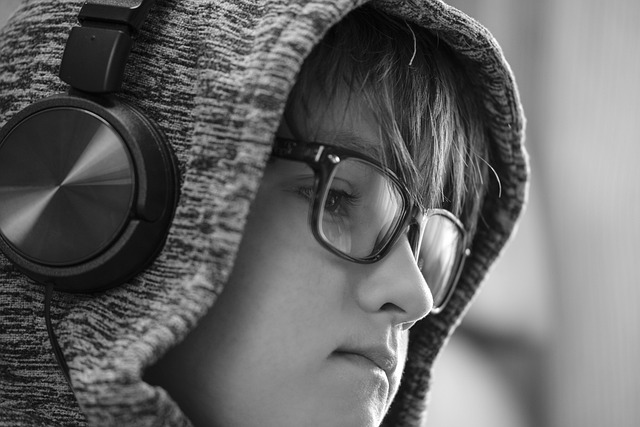Twitter users post over 500 million tweets every day. However, the social media platform cannot display all these tweets on your feed, only a few. Because it can only display a few tweets, the platform uses a unique pathway to filter the tweets for you. This pathway, also known as the Twitter algorithm, chooses tweets that appear as you browse the social media service. It picks the posts on the “For You” page and trends, determining how they rank.
The Twitter algorithm plays a huge role in the kind of posts that users come in contact with. However, it uses several metrics for its function. First, the algorithm works with a recommendation system that comprises several related services. Also, the algorithm functions by considering user information, tweets, and engagement data. All these work to create a unique user experience on the platform. This guide discusses all of that.

How Does the Twitter Algorithm Work? All the Information About the Algorithm’s Functionality
Anyone who has used the social media service for a while must have encountered discussions about the algorithm. Although it may sound quite far-fetched, it is simply a set of rules influencing the specific content a user sees. These social media algorithms function like self-driven systems that perform specific actions when specific conditions are in place. Users intent on building brands on platforms like Twitter must understand how they work. Thus, there are questions like “How does the Twitter algorithm work?”

Brief Overview of How the Twitter Algorithm Works

Like a ripple effect, the social media company generates more revenue when users spend more time on the platform. The company generates revenue from Twitter ads which it shows to its users. Consequently, the company makes more when users watch and take action on more ads. So, the company designs its platform to retain users for as long as possible. However, it can only do this when it offers content that individual users are in sync with. Now, this is the role of the Twitter algorithm.
The company has implemented an algorithm to prioritize content users may be more inclined to engage with. In return, content like this could make users spend more time on the platform, generating more revenue for the company. It’s a value-for-value transaction, and the Twitter algorithm fosters all of it. It considers the type of content you may likely engage in. It also considers the trends among users that fall within a similar demographic.
The algorithm works by guessing the few thousand that could interest you from the 500 million tweets published daily. It also utilizes a probability ratio that engagement would occur. The top tweets rank higher in the probability ratio; the platform pushes them to the top. Finally, it removes inappropriate tweets, adds a few ads, and floods your feeds. Getting knowledge of these functions could help to create better-performing posts.
What Sources Do the Twitter Algorithm Use?
The social media service considers different sources to find relevant tweets that apply to different individuals. For instance, the company strongly considers in-network sources, which comprise the people you follow. The Twitter algorithm employs a graph score between the reader and the tweet’s author.
The graph draws the likelihood that s single users would interact with posts from the other user. This way, the platform automatically concludes how much content to display from that author. A higher graph score implies that more posts will reach a particular follower. Twitter has recently worked on the in-network source, substituting the previous model for another.
The Twitter algorithm also considers out-of-network sources when retrieving relevant tweets for a specific user. The company has admitted that it is quite tricky correlating relevance from sources that users do not follow. Nonetheless, the social media platform tackles this issue in two ways.
First, it uses social graphs; the graphs estimate relevance by considering the interactions with people a user follows. These graphs also factor in engagements from users with similar interests. The social media service considers these factors, ranking resulting tweets using the regression model. Again, their use has decreased slightly due to the tricky nature of social graphs.
Secondly, the algorithm utilizes embedding spaces to gather relevant and recent tweets for a user. This model pushes tweets and users similar to a user’s interests. Here, the algorithm determines a user’s similarity by comparing numerical representations. In return, the platform substitutes similarity for relevance, forwarding the resulting tweets across their “For You” feed.

How Does the Twitter Ranking Algorithm Work? Reasons Why Some Tweets Appear Above Others
As you scroll down your Twitter feed, you will notice certain tweets and users above others. If you search for a pattern, you will notice that specific users or tweet patterns always retain the top position. On the other hand, others maintain the lower positions. Many users are not sure about the functionality of the Twitter ranking algorithm.
How Does the Twitter Algorithm Determine Ranking?
The social media platform works in different ways to ensure the more relevant tweets are visible to users. Thus, the Twitter algorithm, which decides which tweets appear above others, serves more useful posts. For instance, if the social media service has between 1500 tweets that it considers relevant, it utilizes scores to determine which item it should prioritize.
Here, the social media service creates direct scores that predict the relevance of each item. These direct scores also primarily decide the order of the tweets on a user’s timeline. Currently, the platform treats all items equally, not considering the source anymore.
Again, the Twitter algorithm achieves the resultant ranking using a 45M neural network. The algorithm trains this network on tweet interactions to improve engagements. This strategy considers thousands of outputs, features, and labels to score every tweet. The labels stand for the probability of engagement. Subsequently, the platform ranks tweets based on these scores.

What Factors Does the Twitter Algorithm Consider During Ranking?
Apart from the traditional techniques that that Twitter algorithm employs to rank tweets, certain factors also come into play. The in-network and out-of-network sources provide the pool from which the service pulls posts for users. Thus, these factors affect the ranking of posts on the home feed, topics, and trends.
Recency is one factor that comes into play when the algorithm ranks content on the social media platform. This factor considers the timing of the posts, prioritizing newer ones over older ones. Also, the platform places fresh trends higher on the priority list than trends that have been around for longer. Again, the system places current events and discussions at the top of the newsfeed.
Relevance is one major factor that the Twitter algorithm considers when ranking tweets. Relevance relates to the probability of a user finding certain content interesting and interacting with it. In this case, the algorithm recommends content based on a user’s past interactions. This is why users always come in contact with the same kind of content that they’ve previously engaged with. The location and topics you’ve previously mentioned also determine how relevant you will find certain content.
On the other hand, Twitter also organizes content based on the type of media attached to them. Media like videos, images, GIFs, and polls draw different reactions from the algorithm, affecting their rank. Overall, the platform does not rank abusive or spammy content favorably.

What Is the Twitter Trending Algorithm: How Does It Work Too?
The trending tab on Twitter is the base of the fun. It carries the immense chaos that the social media platform is renowned for. This tab lists all the trending topics in a user’s country. Users can click an item from the list to uncover more information. The Twitter trending algorithm ranks topics on the platform by factoring in the volume of tweets, retweets, and replies.
The algorithm not only factors in the volume of tweets but also identifies popular topics. This idea allows the platform to pick hot topics that center the current discussion. Thus, it avoids picking ones that have been popular for an extended period. More clearly, the trending tab captures emerging discussions on the service.
The tab functions interestingly. For instance, you may see a popular celebrity trending on Twitter. However, immediately understanding why could be hard until you click their names and browse the results. Nonetheless, this aspect of the Twitter algorithm keeps up with heavily mentioned topics. This way, the platform displays the number of times users have mentioned these topics within specific windows.
The trends section of Twitter possesses different sections that cover topics on news, entertainment, sports, and business. All these sections show trends relating to their designated fields. This way, users can directly head to the section they are most interested in to find updates regarding such fields. The aspect of the Twitter algorithm handling trends also functions with topic recommendations from the “Explore tab.” This tab draws content based on location. Nonetheless, it allows tweeps to vary their locations, drawing content globally.

What Is the Twitter Cropping Algorithm: How Does It Affect Images Uploaded to the Platform?
Since 2011, Twitter has allowed users to share images on the platform. Over the next period, images have grown to become an essential aspect of interaction on the platform. Users upload millions of images to the social media service daily. If left alone, these tons of images could alter the already-designed user interface. Fortunately, the Twitter cropping algorithm cuts down the images to optimize consistency when users scroll through the site.
How Did the Twitter Algorithm for Cropping Function Previously?
In the past, the aspect of the Twitter algorithm was responsible for cropping images using face detection. This was to display the visible part of the image containing the most pronounced face available. However, this technique worked quite well. It had some limitations. For instance, it cropped images containing no faces awkwardly. Also, it could mistakenly detect faces when the image contained none.
In most instances, it displayed the center of images that did not contain faces. This action also created awkward previews. The social media platform has developed better techniques that crop images without these issues.
How Does the Twitter Algorithm for Cropping Work Now?
The company has employed another technique because face detection did not work well for the Twitter cropping algorithm. The algorithm now uses saliency to crop images and choose the right areas to focus on during a preview. This algorithm chooses image regions with higher salience for previews. These regions are those that users are more likely first to notice when looking at the full image.
Studies have indicated that people first notice faces, text, animals, objects, and high-contrast areas. This aspect of the Twitter algorithm uses this data to crop around the regions that people may find more interesting. Because this technique uses many neural networks, it tends to be slow. However, the social media company subsequently included pruning and optimization improvements to boost the functionality.

How To Use the Twitter Algorithm in Your Favor: Working With the Algorithm to Grow Your Account
As a Twitter user, understanding how the algorithm works is advantageous, especially if you aim for growth on the platform. You can optimize your audience and engagements if you tailor your interactions to be in sync with the Twitter algorithm. So, a few actions keep you at peace with the platform and ensure your posts bloom.
First, optimize your activity on the platform. Social media experts recommend that users post two or three times every day. The times at which you publish tweets also matter. You should always target mornings when people are most active. Also, the Twitter Blue subscription is a cheat code that boosts engagement and reach.
Hashtags are also items that the Twitter algorithm favors. Trending hashtags are helpful for users intending to garner the maximum reach. Using media such as images, GIFs, videos, and polls can also be advantageous. Also, you can use the information from your analytics to hop on trends and hot topics. All of this help to remain on the right side of the algorithm.
The Twitter algorithm targets and penalizes accounts with spammy content and tweets that violate the platform’s rules. Removing the bulk tweets, replies, and retweets within this category is sometimes necessary. TweetEraser can be useful for this activity. At TweetEraser, we have designed a simple web application that deletes tweets in large numbers. This web app imports and loads archives, deleting bulk tweets in a few clicks. It does not spread promotional content, so it is ideal for tweeps cleaning their timelines. Start filtering and cleaning your Twitter timeline today!





